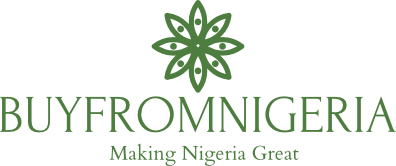Yam cultivation has been a long-standing agricultural practice that has gained popularity for its nutritional benefits and versatility in various cuisine worldwide for farmers and entrepreneurs involved in yam production.
In this blog post, we will explore five creative methods that go beyond the traditional avenues of selling yams at local markets, supplying them to restaurants, or exporting them to international markets.
Monetizing your yam harvest requires thinking outside the box and leveraging the inherent qualities of yams to create appealing products and experiences that capture the interest and wallets of consumers. Whether you’re a small-scale farmer or an aspiring entrepreneur, these creative strategies will inspire you to explore exciting opportunities and take your yam business to the next level.
So, if you’re ready to unleash your creativity and explore innovative ways to monetize your yam harvest, let’s dive into the following sections and discover how you can transform your yams into profitable ventures that leave a lasting impression.
Traditional Methods of Monetizing Yam Harvest
While traditional methods of selling yams at local markets, supplying them to restaurants, and exporting them to international markets have been the go-to options for monetizing yam harvests, it’s important to explore alternative approaches that can add value and profitability to your business. Let’s take a closer look at these traditional methods:
A. Selling yams at local markets:
Local markets have long been a reliable avenue for farmers to sell their yams directly to consumers. Setting up a stall at farmers’ markets or participating in community-based marketplaces provides an opportunity to connect with customers face-to-face and establish a loyal customer base. However, with increasing competition, it’s important to find ways to stand out from the crowd.
To differentiate your yams at local markets, consider the following strategies:
1. Quality and Variety:
Ensure that your yams are of the highest quality and offer a diverse range of yam varieties. This will attract customers looking for unique flavors and textures.
2. Education and Engagement:
Provide educational materials, recipe cards, or cooking tips to showcase the versatility of yams. Engage with customers by sharing your knowledge and expertise about yams, their health benefits, and various culinary uses. This will not only enhance customer experience but also build trust and loyalty.
3. Packaging and Presentation:
Invest in attractive packaging that highlights the freshness and quality of your yams. Consider using eco-friendly materials and unique branding to create a memorable impression. Eye-catching displays and signage can also draw attention to your stall and generate interest.
4. Customer Relationships:
Take the time to build relationships with your customers. Engage in friendly conversations, listen to their feedback, and address any concerns they may have. Building a loyal customer base can lead to repeat sales and positive word-of-mouth referrals.
While local markets are a tried and tested method, it’s crucial to explore additional avenues that can help you expand your customer base and increase your revenue.
B. Supplying yams to restaurants and food vendors:
Collaborating with local restaurants and food vendors can be a mutually beneficial arrangement for both parties involved. Restaurants and food vendors often seek fresh, high-quality ingredients to enhance their culinary offerings, and yams can be a versatile addition to their menus. Here’s how you can make the most of this opportunity:
1. Quality and Consistency:
Ensure that your yams meet the quality standards and specifications required by restaurants and food vendors. Consistency in size, appearance, and taste is crucial to meet their expectations.
2. Establish Relationships:
Reach out to local restaurants and food vendors and introduce them to your yams. Offer samples and demonstrate the unique qualities of your yams, such as flavor, texture, or specific varieties. Building strong relationships based on trust and reliability can lead to long-term partnerships.
3. Customise Offerings:
Collaborate with chefs and food vendors to develop yam-based dishes that cater to their specific requirements. Work together to create innovative recipes and explore different cooking techniques to showcase the versatility of yams. This collaborative approach can help differentiate your offerings and create a competitive edge.
4. Value-Added Services:
Consider providing value-added services to make it more convenient for restaurants and food vendors to incorporate your yams into their menus. This could include pre-cutting, peeling, or packaging yams in specific quantities based on their needs. By offering such services, you can save them valuable time and effort in their food preparation process.
By supplying yams to restaurants and food vendors, you can tap into a larger customer base and potentially secure consistent orders. This can provide stability and steady income for your yam business.
C. Exporting yams to international markets:
Expanding into international markets can open up lucrative opportunities for yam farmers and entrepreneurs. Global demand for yams is on the rise, and tapping into international markets can significantly boost your revenue. Here are some considerations for exporting yams:
1. Market Research:
Conduct thorough market research to identify countries with a demand for yams. Analyse market trends, consumer preferences, and regulations related to yam imports. Understanding the target market will help you tailor your product offerings and marketing strategies accordingly.
2. Compliance and Certification:
Familiarise yourself with the import regulations and certifications required by the target countries. Ensure that your yams meet the quality standards, health and safety regulations, and any specific certifications necessary for export. Adhering to these requirements will help build trust with international buyers and streamline the export process.
3. Logistics and Distribution:
Establish reliable transportation and logistics networks to ensure the timely and efficient delivery of your yams. Consider partnering with freight forwarders or shipping companies experienced in handling agricultural products. Proper packaging, labeling, and documentation are crucial for international shipments.
4. Building Relationships:
Develop strong relationships with international buyers, importers, and distributors. Attend trade fairs, exhibitions, and industry events to network and showcase your yams. Building trust and establishing a reputation for quality and reliability can lead to long-term partnerships and repeat orders.
Creative Ways to Monetize Your Yam Harvest

While traditional methods of selling yams at local markets, supplying them to restaurants, and exporting them to international markets have their merits, exploring creative avenues can unlock exciting opportunities to monetize your yam harvest in unique ways. Let’s delve into some innovative strategies that can add value and profitability to your Yam business:
A. Value-Added Yam Products
1. Yam chips and crisps:
Yam chips and crisps are a delicious and healthy alternative to traditional potato chips. They can be made by thinly slicing yams, seasoning them with various flavors, and then baking or frying them to achieve a crunchy texture. To monetize your yam harvest through this avenue, consider the following steps:
a. Process of making yam chips and crisps:
Research and develop recipes for different flavors of yam chips and crisps. Experiment with seasoning combinations that complement the natural sweetness of yams. Invest in suitable equipment for slicing and processing yams efficiently.
b. Packaging and branding strategies:
Create eye-catching packaging that highlights the natural appeal of yam chips and crisps. Utilize environmentally friendly materials to resonate with health-conscious consumers. Develop a unique brand identity that communicates the quality and uniqueness of your product.
c. Marketing and distribution channels:
Identify potential distribution channels such as local stores, health food shops, or online platforms. Participate in food festivals, farmers’ markets, and community events to promote your yam chips and crisps. Leverage social media platforms to engage with customers, share recipes, and generate buzz around your product.
2. Yam flour and powdered yam:
Yam flour and powdered yam are versatile ingredients that can be used in various culinary applications. They are commonly used in gluten-free recipes, as thickeners in soups and sauces, or as a base for baked goods. To monetize your yam harvest through these products, consider the following steps:
a. Production process and equipment needed:
Invest in equipment that allows you to efficiently process yams into flour or powder. Clean and peel the yams, then dry and grind them into a fine texture. Ensure consistency and quality control throughout the production process.
b. Target markets and demand for yam flour:
Research the demand for yam flour and powdered yam in your local area and beyond. Identify potential customers, such as bakeries, gluten-free product manufacturers, or individuals seeking healthier alternatives. Highlight the nutritional benefits and unique flavor profile of yam-based products.
c. Utilising online platforms for sales:
Establish an online presence through e-commerce platforms or your website. Showcase your yam flour and powdered yam products, provide detailed product information, and offer convenient online purchasing options. Leverage social media and content marketing to reach a wider audience and engage with potential customers.
By creating value-added yam products like chips, crisps, flour, or powdered yam, you can tap into niche markets, cater to specific dietary preferences, and offer unique options to consumers. These innovative products will not only increase the value of your yam harvest but also differentiate your business from competitors.
B. Yam-Based Snack Foods
1. Yam fries and wedges:
Yam fries and wedges offer a healthier alternative to traditional potato fries. With their naturally sweet flavor and creamy texture, yam fries and wedges can be a hit among health-conscious consumers. To monetize your yam harvest through this avenue, consider the following steps:
a. Unique recipes and flavor profiles:
Experiment with different seasoning blends and cooking techniques to enhance the taste of yam fries and wedges. Consider incorporating herbs, spices, or specialty seasonings to create distinctive flavor profiles that set your products apart.
b. Collaborations with local restaurants and food trucks:
Partner with local restaurants and food trucks to feature your yam fries and wedges on their menus. This collaboration can help increase exposure and attract customers who may not have otherwise been aware of your products.
c. Promoting through food festivals and events:
Participate in food festivals, fairs, and events where you can showcase your yam fries and wedges. Offer samples, engage with attendees, and create a memorable experience. Utilize signage and branding materials to increase brand visibility and leave a lasting impression.
2. Yam-based energy bars:
Yam-based energy bars are a nutritious and convenient snack option for those seeking sustained energy and wholesome ingredients. They can be made by combining mashed yams with nuts, seeds, dried fruits, and other natural ingredients. To monetize your yam harvest through this avenue, consider the following steps:
a. Nutritional benefits of yam in energy bars:
Highlight the nutritional benefits of yams, such as their high fiber content, vitamins, and minerals. Position your yam-based energy bars as a healthier alternative to conventional energy bars on the market.
b. Developing recipes and flavors:
Experiment with different flavor combinations and ingredient ratios to create delicious and satisfying energy bars. Consider incorporating superfoods or unique flavor profiles to cater to specific dietary preferences or niche markets.
c. Packaging and online sales strategies:
Invest in attractive and informative packaging that showcases the natural ingredients and benefits of your yam-based energy bars. Establish an online presence through e-commerce platforms or your website to reach a wider customer base. Leverage social media platforms to engage with potential customers, share recipes, and promote your products.
By offering yam-based snack foods such as fries, wedges, or energy bars, you can tap into the growing demand for healthier and more nutritious snack options. These creative products not only diversify your product range but also provide opportunities to cater to specific dietary needs and preferences.
C. Yam-Based Skincare and Cosmetics
Yams offer not only nutritional benefits but also potential beauty benefits for the skin. By harnessing the natural properties of yams, you can create a range of skincare and cosmetic products that cater to the growing demand for natural and organic beauty solutions. Here’s how you can monetize your yam harvest through this avenue:
1. Yam-based soaps and body scrubs:
Yams contain vitamins and antioxidants that can nourish and revitalize the skin. By incorporating yam extracts or powdered yams into handmade soaps or body scrubs, you can create unique products with potential skin benefits. Consider the following steps:
a. Benefits of yam in skincare products:
Research and highlight the skin benefits of yams, such as moisturizing properties, anti-aging effects, or skin-brightening qualities. Educate your customers on the natural ingredients used in your yam-based soaps and body scrubs.
b. Formulation and production techniques:
Experiment with different formulations and ingredient combinations to create effective and appealing Yam-based skincare products. Ensure the quality and safety of your products by following proper manufacturing processes and adhering to regulatory guidelines.
c. Targeting niche markets and online platforms:
Identify specific niche markets interested in natural and organic skincare products. Utilize online platforms, such as e-commerce websites or social media platforms, to reach your target audience and promote your yam-based soaps and body scrubs. Collaborate with influencers or beauty bloggers to generate buzz and increase brand visibility.
2. Yam-infused face creams and masks:
Yam extracts can be incorporated into face creams and masks to provide hydration, nourishment, and potential anti-inflammatory benefits for the skin. Monetize your yam harvest through the following steps:
a. Skin benefits and natural ingredients of yam:
Highlight the skincare benefits of yams, such as improving skin elasticity, reducing redness, or promoting a healthy complexion. Emphasize the natural and organic ingredients used in your yam-infused face creams and masks.
b. Collaborating with local beauty brands:
Partner with local beauty brands or skincare specialists to develop and market your yam-infused face creams and masks. Leverage their expertise and industry connections to reach a wider customer base and enhance the credibility of your products.
c. Utilising social media influencers for promotion:
Engage with social media influencers who have a focus on natural skincare or organic beauty. Send them samples of your yam-infused face creams and masks and encourage them to share their honest reviews and experiences with their followers. This can help generate buzz and drive sales.
By venturing into yam-based skincare and cosmetic products, you can tap into the growing demand for natural and organic beauty solutions. These products not only capitalize on the unique properties of yams but also align with the increasing consumer preference for sustainable and eco-friendly options.
D. Yam Farm Tours and Experiences
Offering farm tours and immersive experiences can not only generate additional revenue but also provide a unique opportunity for consumers to connect with the source of their food. By showcasing your yam farm and sharing your knowledge, you can create memorable experiences that resonate with visitors. Here’s how you can monetize your yam harvest through this avenue:
1. Setting up a yam farm tour:
Provide guided tours of your yam farm to educate visitors about the cultivation process, sustainability practices, and the journey of yams from seed to harvest. Consider the following steps:
a. Creating a unique and educational experience:
Design the farm tour to be interactive and informative. Incorporate elements such as demonstrations, hands-on activities, or tastings to engage visitors and deepen their understanding of yam farming.
b. Guided tours and hands-on activities:
Arrange guided tours where visitors can explore the farm, learn about different yam varieties, and participate in activities such as planting or harvesting yams. This hands-on experience will create a lasting impression and connection with your farm.
c. Ticketing and marketing strategies:
Establish a ticketing system for your farm tours, considering factors such as duration, group size, and pricing. Market your farm tours through various channels such as social media, local tourism boards, or collaborating with travel agencies. Highlight the unique aspects of your farm and the educational value visitors will gain.
2. Hosting yam-themed events:
Organize yam-themed events on your farm to attract visitors and create memorable experiences. Consider the following steps:
a. Harvest festivals and yam cooking competitions:
Host seasonal events that celebrate the yam harvest. Organize activities such as yam picking, cooking competitions featuring yam-based dishes, or yam-themed games. Collaborate with local chefs or culinary experts to provide demonstrations and workshops.
b. Collaborating with local businesses and sponsors:
Partner with local businesses, such as food vendors, crafters, or musicians, to create a vibrant and diverse event atmosphere. Seek sponsorships from organisations interested in supporting local agriculture and community events.
c. Generating revenue through ticket sales and partnerships:
Sell event tickets to attendees, offer food and merchandise sales, or create vendor spaces for local businesses to showcase their products. These revenue streams, combined with potential partnerships and sponsorships, can contribute to the financial success of your yam-themed events.
E. Yam-Based Art and Crafts
Yams have more potential than just being a culinary delight. Their unique shape and texture can inspire creativity and serve as a canvas for artistic expression. By tapping into the world of art and crafts, you can monetize your yam harvest in unexpected ways. Here’s how:
1. Yam sculpture and carving:
Explore the artistic potential of yams by transforming them into sculptures or carvings. With the right tools and skills, you can create intricate designs and captivating artwork. Consider the following steps:
a. Exploring the artistic potential of yams:
Experiment with different techniques and styles to bring out the artistic qualities of yams. From simple carvings to intricate sculptures, let your creativity flow and create unique pieces that showcase the natural beauty of yams.
b. Skill development and craftsmanship:
Hone your artistic skills through practice and research. Learn carving techniques, study different art forms, and experiment with various tools and materials. Continuous skill development will elevate the quality and craftsmanship of your yam-based artwork.
c. Selling yam art through galleries and online platforms:
Showcase and sell your yam-based artwork through art galleries, local exhibitions, or craft fairs. Create an online presence through platforms like social media, art marketplaces, or your website. Utilize captivating visuals and storytelling to engage potential buyers and collectors.
2. Yam-themed merchandise and souvenirs:
Capitalize on the popularity of yams by creating yam-themed merchandise and souvenirs. From keychains to t-shirts, these products can appeal to yam enthusiasts and serve as memorable keepsakes. Consider the following steps:
a. Designing and producing yam-themed products:
Develop creative designs that incorporate yam motifs, shapes, or patterns. Apply these designs to various merchandise such as clothing, accessories, kitchenware, or home decor items. Consider using sustainable materials or collaborating with local artisans for production.
b. Collaborating with local artisans and craftsmen:
Partner with local artisans and craftsmen to bring your yam-themed designs to life. Collaborate on product development, manufacturing, or customization services. This collaboration can enrich your offerings with their expertise and contribute to the local creative community.
c. Sales and distribution strategies:
Determine the best sales channels for your yam-themed merchandise. This may include selling directly through your website, participating in local markets or craft fairs, or collaborating with local retailers. Leverage social media and influencer marketing to promote your products and reach a wider audience.
By exploring the artistic potential of yams and creating yam-based art and crafts, you can tap into the creative market, attract art enthusiasts, and offer unique products that showcase the natural beauty of yams. These creative endeavors not only monetize your yam harvest but also contribute to the cultural appreciation of yams.
Conclusion
In this blog post, we’ve explored five creative ways to monetize your yam harvest, going beyond the traditional methods of selling yams at local markets, supplying them to restaurants, or exporting them to international markets. By diversifying your approach and thinking outside the box, you can unlock new opportunities and elevate the value of your yam business.
We explored the possibilities of offering yam farm tours and hosting yam-themed events, providing immersive experiences for customers to connect with your yam harvest and gain a deeper appreciation for your work.
So, whether you choose to venture into value-added products, snack foods, skincare and cosmetics, farm tours and events, or artistic creations, remember that the possibilities are endless.
In the end, it’s not just about the yams themselves but the value and experiences you create around them. Embrace these creative opportunities, and may your yam business thrive and flourish in the ever-evolving marketplace.












